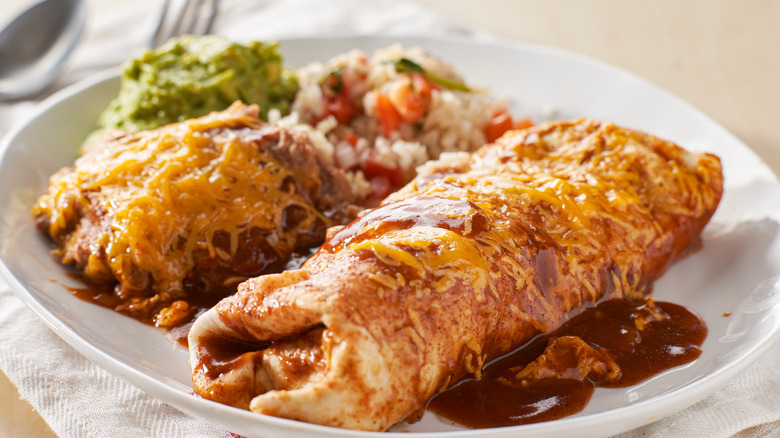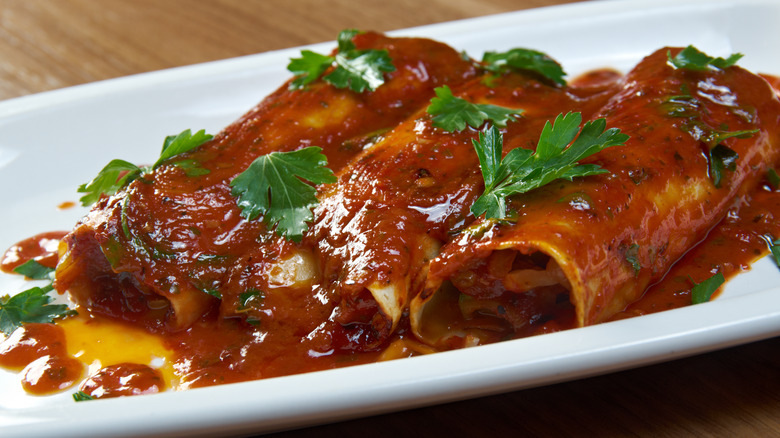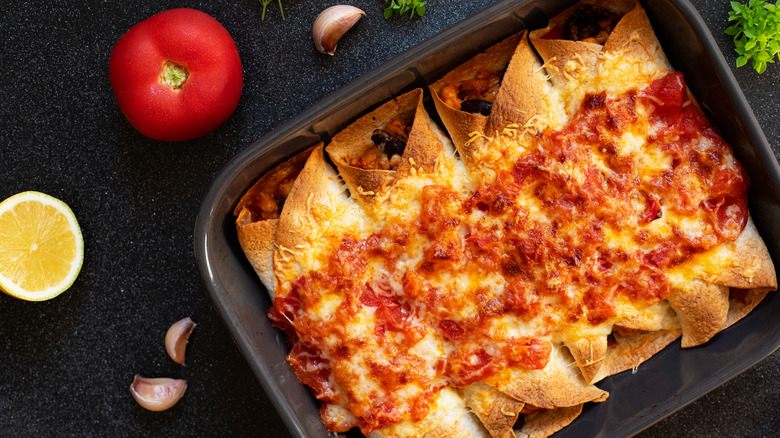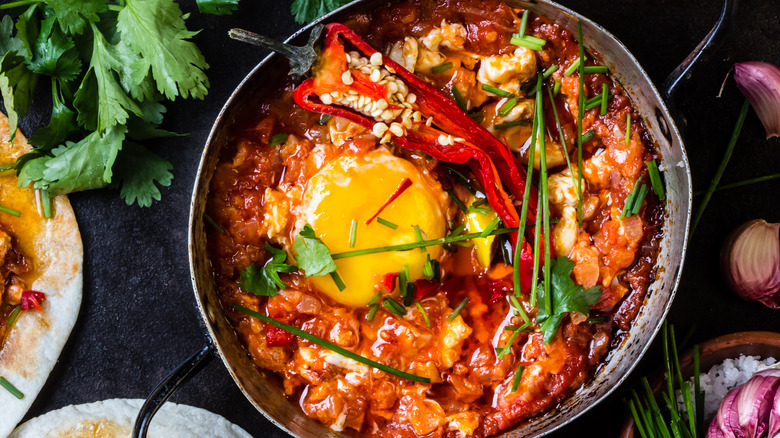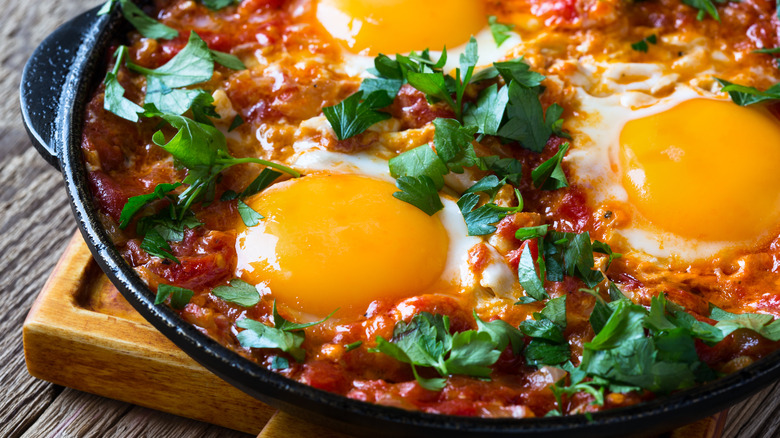Ranchero Sauce Vs. Enchilada Sauce: What's The Difference?
Looking at recipes or scanning a menu, ranchero sauce and enchilada sauce might appear to be totally unrelated, but the truth is that there are commonalities beyond the reddish hue. According to Chili Pepper Madness, the main difference between these two sauces is the flavor focus. Although both sauces have tomato as an ingredient, ranchero is more tomato forward. In contrast, enchilada sauce lets tomato fade behind the other flavors. Still, some people think that the two sauces can be swapped for each other.
Putting aside hot condiments, like Cholula or Tapatio, sauces are a fundamental component of Mexican cuisines. There are many foods that could fall under this term, including salsa and mole.
As Taste Atlas shared, mole is "national dish" of Mexico. While that sauce varies depending on the cook and the location, the collection of flavors is layered and nuanced. Where mole might be complex, ranchero sauce and enchilada sauce are more straightforward, approachable, and similar. From spicy to mild to ranchero to enchilada, sauce and Mexican cuisine are inseparable.
What is ranchero sauce?
While often associated with an egg dish, ranchero sauce and other Mexican sauces do have some similarities, but it is not a salsa. According to Chili Pepper Madness, ranchero sauce is a tomato base sauce with a large amount of peppers. With the numerous peppers, the sauce tends to be spicy, bold, and flavorful. Yet, the sauce is more than just tomatoes and peppers. Depending on the recipe, herbs, spices, and dried chiles can be added to the mix. The combination of ingredients makes this sauce a tasty topping for burritos, tacos, and a variety of other dishes.
Although every ranchero sauce recipe differs, the consensus is that this sauce is tomato focused. Some recipes have a little smokiness from the roasted tomatoes, and other recipes have heat from the bolder chiles. Store brands, and even restaurant brands like Taco Bell, have different spice levels as well. Most sauces are smooth. Although not necessarily blended, it is not chunky like salsa. In many cases, this sauce acts like a flavor enhancer on the plate, but not the star of the dish.
What is enchilada sauce?
A great enchilada usually has a delicious sauce. Although people may vary their preferences as to the perfect way to smother an enchilada, the classic enchilada sauce does have a particular flavor. According to Chili Pepper Madness, an enchilada sauce tends to focus on a milder spice level. Not as tomato forward, the rehydrated chiles and onions are blended to make a sauce that is robust but does not scorch the taste buds.
Although recipes for this type of sauce vary, some options toast the peppers prior to rehydrating them. The cooking process adds a depth of flavor, including a little nuttiness, and helps release some of the oils in the pepper's skin. Combining it with garlic, onions, and spices, the blended sauce can enhance a variety of dishes. From a simple drizzle on a chicken breast to smothering a burrito, the food pairing options are many.
What is the biggest taste difference between ranchero sauce and enchilada sauce?
While the appearance of both ranchero sauce and enchilada sauce might seem to have visual consistencies and rich red hues, the flavors are quite different. The biggest difference relates to spice preferences. For those people who prefer a bold burn with each bite, the ranchero sauce is the better option. The heat from the chiles is clear. If mild flavor is the safer route, enchilada sauce should be the sauce of choice. The balance of the onion and the garlic adds to the enjoyment.
Even though each recipe varies, it might not necessarily be the difference between the two sauces. Rather, it can be finding a preferred recipe. From a garlic heavy option to a bolder adobe spice, the choice comes down to the layers of flavors. With various store choices and homemade recipes, finding a preferred balance of flavor is more important than the label.
How to serve ranchero sauce and enchilada sauce
When thinking about ranchero sauce and enchilada sauce, a few dishes instantly come to mind. First, the most obvious option is huevos rancheros. Loosely translated as "ranch eggs," the combination of fried eggs, tortillas, and a ranchero sauce is a breakfast or brunch staple (via Spruce Eats). Although recipes vary, the concept is to make a hearty, bold-flavored dish that satisfies. The smoky, spicy notes from the ranchero sauce balance the richness in the egg yolk. Lastly, the tortillas complete the satisfying bite.
For enchilada sauce, the obvious connection is to an enchilada, but it isn't the only option on the table. Home Cooking Memories offers 15 different uses for an enchilada sauce. From a flavor enhancer for a soup to pasta casserole dish to even an ingredient in a pulled pork recipe, the combination of onions and chiles can add that umami note to a variety of dishes. If an enchilada sauce makes that simple cheese and bean enchilada tastier, just think of what it can do for other recipes, too.
